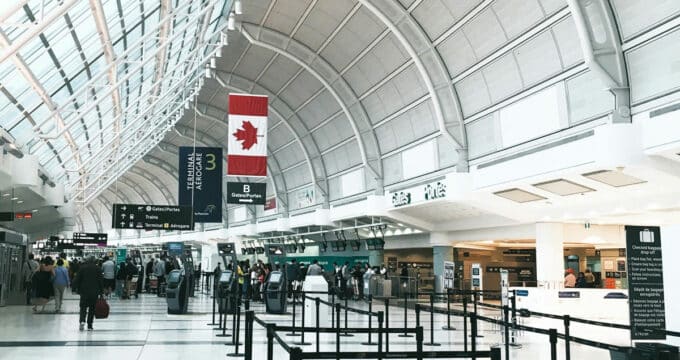Indian technology institutes open admissions to foreign students
Earlier this year, India’s Human Resource Development Minister Smriti Irani approved a proposal that will see an initial 10,000 new seats opened for foreign students at the country’s premier engineering institutes. This marks the first time that admission in the Indian Institutes of Technology (IITs) has been opened to overseas students. On 14 January 2016, the Minister issued a memorandum to all 18 IITs which in turn asks the senate or board of governors at each institute to formally approve the initiative. The proposal is clear that seats for foreign students will not come at the expense of Indian applicants. Rather, the aim is to add thousands of new seats across all IITs and to have overseas students pay a significant differential fee in the range of Rs 400,000-500,000 per year (US$6,000-US$7,500), as opposed to the Rs 90,000 annual tuition (US$1,350) required of Indian students. The initiative will initially focus on eight target markets in Asia, Africa, and the Middle East: Afghanistan, Bangladesh, Nepal, Pakistan, Sri Lanka, Ethiopia, Singapore, and Dubai in the United Arab Emirates. The first five of these share membership with India in the South Asian Association of Regional Cooperation (SAARC). Government officials have indicated that students from the eight target markets may also be issued with a visa for their entire programme of study in India, rather than for a renewable one-year term as is generally the case. The Minister’s 14 January memo also sets out that IIT Bombay will serve as a national coordinating centre for the recruitment effort. The institute’s director, Professor Devang Khakhar, has been tasked with preparing a more detailed plan of action with the expectation that implementation will begin later this year. The proposal to the Ministry of Human Resource Development (HRD) appears to have sprung directly from an October 2015 meeting of the IIT Council in Mumbai. The Economic Times reports that at the October meeting of the IIT governing body, "It was decided that ‘a system for admitting foreign students would be put in place, with preference being given to students from SAARC and African countries.’ Earlier, in September, the Council of IITs in its 41st meeting had agreed that up to a fifth of…postgraduate students in IITs may be international students who will be provided admission on a supernumerary basis." Admissions for foreign applicants are expected to be opened for the 2017 academic year, but outreach work will begin in August 2016. Looking ahead to 2017, the Indian government intends that IIT entrance examinations will also be offered in selected foreign markets, with test administration to be coordinated by the IITs with the support of Indian diplomatic missions abroad. All candidates hoping to study at an IIT must first undertake either the Joint Entrance Examination (JEE), for undergraduate students, or the Graduate Aptitude Test in Engineering (GATE) for master's and PhD applicants. Both are widely viewed as among the toughest standardised admissions tests in the world. As a senior HRD official remarked to news agency PTI, "The entrance tests to the IITs abroad have been held till now only to admit Indian nationals. This is for the first time that it has been planned to admit foreign students through tests held abroad. It is aimed that the plan would be operationalised from the JEE/GATE exams to be conducted in 2017."
The big why
The Indian government is motivated in part by a desire to boost the international rankings of its premier engineering schools, and internationalisation, including the proportion of international students, is an important parameter in ranking schemes. "Despite having the best talents from India and a huge spending, none of the IITs find mention among the top 200 global institutes. This has been a cause of concern not only for the IITs but also for the Ministry of Human Resource Development," adds the newspaper DNA. "[The drive to recruit more foreign students] would also help strengthen India's soft power globally, especially among neighbours," adds a professor from IIT Delhi. Speaking at an Indian Council for Cultural Relations (ICCR) event last week in Delhi, Minister Irani declared that India is an "affordable destination for high-quality education." She added, "Cultural diplomacy has been at the forefront of our engagement through the [Ministry of External Affairs], the Honourable Prime Minister Narendra Modi now has given it an added push through education diplomacy. The challenge before the country's educational institutions is whether the engagement with foreign students is to be limited only on the basis of scholarships or can they be invited because of excellence in various fields."
State of play
Starting from a small base, Indian has seen some steady gains in its foreign enrolment over the past several years. It hosts about 35,000 students today, more than three-quarters of which are enrolled in undergraduate programmes. Many come from other SAARC countries, notably Nepal - which accounts for just over 20% of foreign enrolment in India - Bhutan, and Afghanistan. As these early patterns illustrate, India could well expect to draw increased numbers from neighbouring South Asian markets, or even further afield. In the context of current enrolment levels, the 10,000 additional seats anticipated under the emerging IIT recruitment drive will represent a nearly 30% increase in international enrolment alone.
















